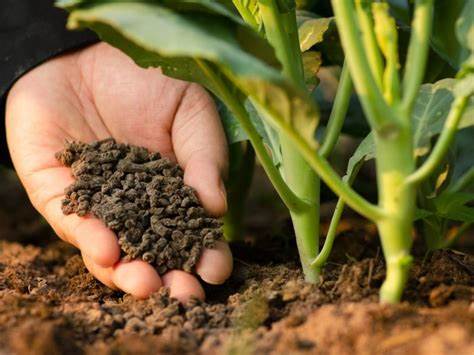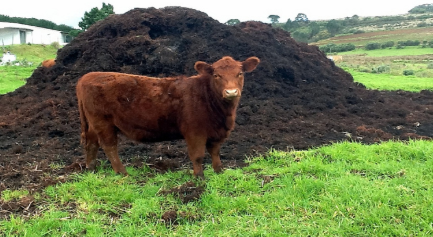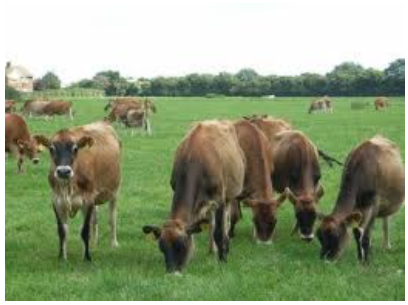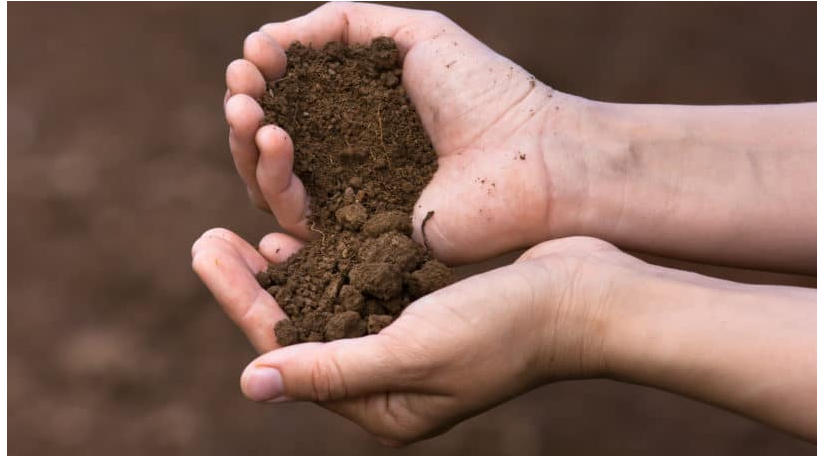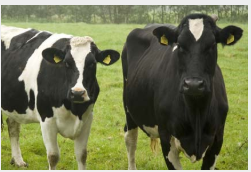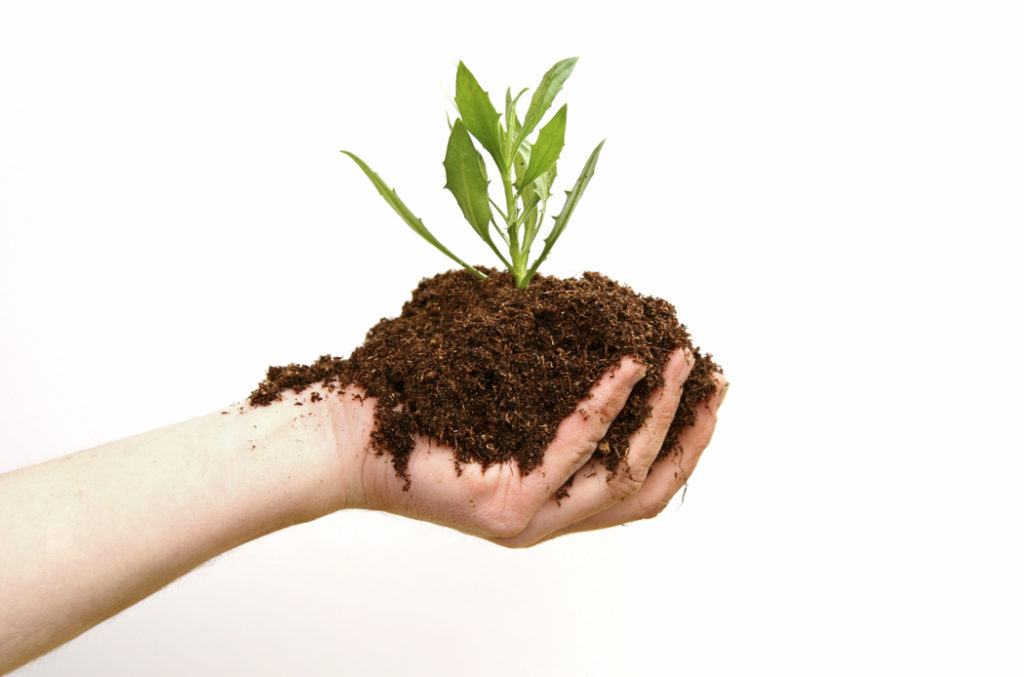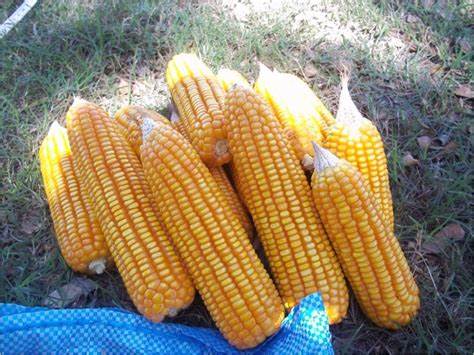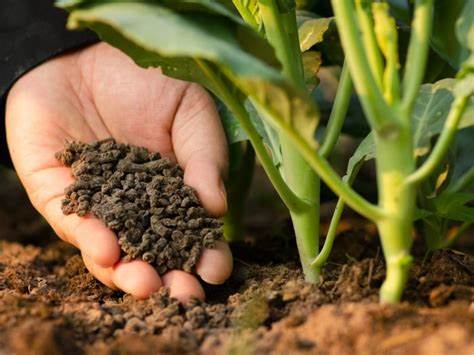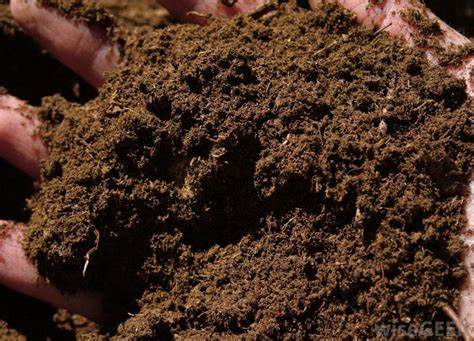The invention relates to the field of fertilizer preparation, in particular to a granular organic fertilizer and a preparation method thereof.
Background technology:
In recent years, the input of chemical fertilizer has increased greatly. Due to the single nutrient type, long-term application of chemical fertilizer can easily lead to unbalanced nutrients in soil and food, resulting in nutrient loss, pollution of the environment, and improper application will reduce the quality of agricultural products. Long-term large-scale application of chemical fertilizers will inhibit the activities of soil microorganisms, resulting in a decline in the ability of soil self-regulation. Therefore, although chemical fertilizers contain high single nutrients and use less, long-term application of chemical fertilizers is not advisable under the increasing attention to the needs of the living environment. Therefore, the development of organic fertilizers is of great importance. Significance.
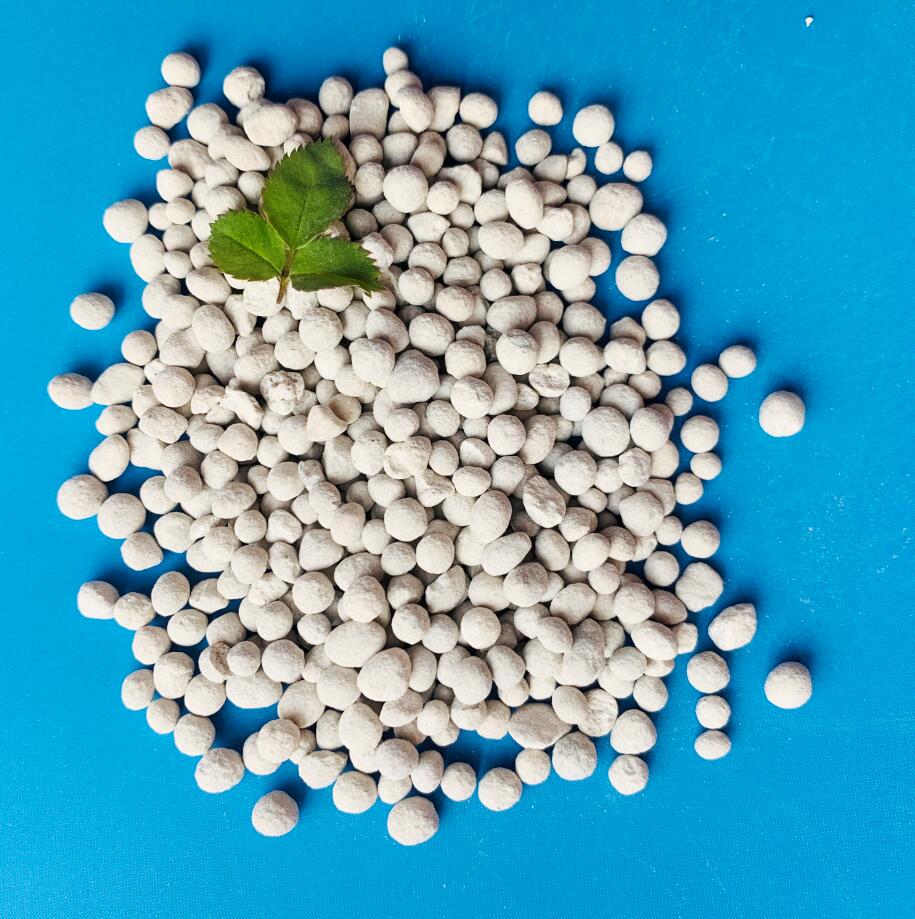
Farm wastes – Ideal materials
Farmyard manure is the accumulation of pig manure, pig, cattle, sheep and other excrement and human excrement, and the organic fertilizer is accumulated. The source of farm manure is wider and its cost is lower. The nutrient content of farm manure is more comprehensive, its fertilizer efficiency is stable and lasting. In addition to nitrogen, phosphorus and potassium, farm manure also contains calcium, magnesium, sulfur, iron and various trace elements, as well as some substances that can stimulate root growth and all kinds of beneficial soil microorganisms. Agricultural fertilizer can improve soil structure, which is rich in humic acid. It can promote the formation of soil aggregate structure, make the soil soft, improve the water and air conditions in the soil, which is conducive to the growth of root system. It can increase soil fertility and water retention performance, improve soil temperature, and promote beneficial microorganisms in the soil. The activity and reproduction of animals; the fertilizer efficiency of farm manure is long.
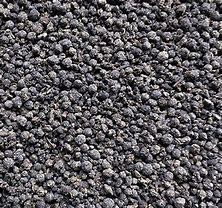
Hiddien weaknesses
However, most of the nutrients in unfermented and decomposed farm manure are organic or slow-acting, which can not be directly absorbed and utilized by crops. Only when they are decomposed into quick-acting state can they be absorbed and utilized by crops. Therefore, direct application of unfermented farm manure will slow down the efficiency of farm manure. Moreover, the organic fertilizer obtained by direct fermentation has higher moisture content and is not easy to preserve.
Technological implementation elements:
Based on the technical problems existing in the background technology, the invention provides a granular organic fertilizer and a preparation method thereof.
The invention provides a granular organic fertilizer, whose raw materials include 25-30 portions of pig manure, 10-15 portions of chicken manure, 10-15 portions of cow manure, 10-15 portions of bagasse, 20-25 portions of corn straw, 7-13 portions of corncob, 10-15 portions of pond mud, 3-5 portions of beeswax and 1-3 portions of microbial fungicide.
Preferably, microbial agents include Lactobacillus fermentans, Bacillus subtilis and Candida prion-producing bacteria.
Optimally, the content of Lactobacillus fermentans, Bacillus subtilis and Candida prion-producing yeasts in microbial agents was 1 X108-3 X108 cfu/g, 3 X107-5 X107 cfu/g and 1 X107-3 X107 cfu/g respectively.
Preferably, the pond mud is the bottom sludge of lotus root culture pond, and the water content is controlled at 40-50%.
The invention provides a preparation method of the granular organic fertilizer, which comprises the following steps:
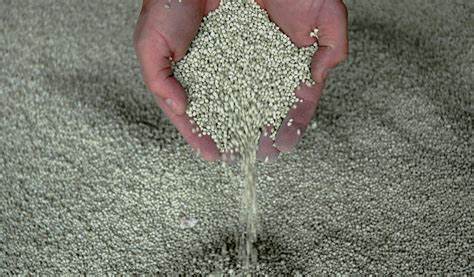
S1. According to the proportion of raw materials, microbial agents were divided into two groups: group A microbial agents and group B microbial agents.
S2. Corn stalk powder and corncob powder were obtained by crushing corn stalk and corncob separately. Corn stalk powder was divided into two groups, namely group C corn stalk powder and group D corn stalk powder.
S3. Mix all corncob meal and C group cornstalk meal from pig manure, chicken manure, cow manure, bagasse and S2 evenly, then add A group microbial agent, mix evenly, and get fermentation substrate.
4. Put the fermentation substrates from S3 into the fermentation tank for the first stage of fermentation, add group B microbial agents, mix evenly, and ferment in the second stage to obtain the fermentation products.
S5. Mix the fermentation product from S4 with group D corn straw powder and pond mud evenly, raise the temperature to 60-70 C by heating, add melted beeswax, mix evenly, granulate and dry to get granular organic fertilizer.
Preferably, the weight ratio of group A microbial agent and group B microbial agent is 3-4:1.
Optimally, the particle sizes of corn straw powder and corncob powder in S2 were 10-20 meshes.
Optimally, the weight ratio of group C corn straw powder to group D corn straw powder was 0.5-0.8:1.
Optimally, the temperature of the first stage fermentation in S4 is 36-40 C and the time is 2-4 days.
Optimally, the temperature of the second stage fermentation in S4 is 32-36 C and the time is 8-12 days.
Preferably, the drying temperature in S5 is 50-70 C, and the moisture content is less than 2%.
Optimally, the particle size of granular organic fertilizer in S5 is 3-5 mm.
The granular organic fertilizer provided by the invention is fermented by pig manure, chicken manure, cow manure, bagasse, wheat straw and corncob, and is made into granular form by adding pond mud and beeswax, which has strong fertility and durable fertility, and can effectively improve soil, alleviate soil hardening and improve soil structure; after being used as base fertilizer before sowing, it can be applied to Zhuang village. Crops play an important role in strengthening seedlings and increasing yields.
By adding microbial agents, controlling the species, quantity, fermentation temperature and time of microbial strains, the fermentation substrates such as pig manure, cow manure and chicken manure can be fully fermented, and the macromolecular organic substances can be converted into small molecular substances that can be absorbed by plants with strong fertility. Fermentation products were mixed with pond mud, wheat straw powder and beeswax to form granular fertilizer, which was convenient for preservation and application. Pond mud is rich in nutrients and microorganisms, and it is a high-quality fertilizer. Beeswax plays a binding role. The prepared feed particles are compact and not easy to loosen. Beeswax is a natural substance secreted by bees, which can be decomposed in nature. Compared with chemical binders, beeswax is more green and environmentally friendly.
The raw materials of the invention are all from natural waste resources, so there are no side effects on crops, effectively solving the problem of farming and fertilization, reducing farmer’s planting cost and improving farmer’s income.
Specific implementation methods
Next, the technical scheme of the invention is described in detail by means of specific embodiments.
Experiments Cases 1
The invention provides a granular organic fertilizer, whose raw materials include 28 pig manure, 13 chicken manure, 11 cow manure, 14 bagasse, 23 corn straw, 9 corncob, 12 pond mud, 3.3 beeswax and 2.7 microbial agents by weight.
Microbial agents include Lactobacillus fermentans, Bacillus subtilis and Candida utilis. The contents of Lactobacillus fermentans, Bacillus subtilis and Candida prion-producing yeast in microbial agents were 1.9 *108 cfu/g, 3.2 *107 cfu/g and 2.3 *107 cfu/g respectively.
The pond sludge is the bottom sludge of lotus root aquaculture pond with water content of 43%.
Experiments Cases 2
The invention provides a granular organic fertilizer, whose raw materials include: pig manure 27, chicken manure 12, cow manure 13, bagasse 12, corn straw 24, corn cob 11, pond mud 14, beeswax 4.8, microbial agent 2.1.
Microbial agents include Lactobacillus fermentans, Bacillus subtilis and Candida utilis. The contents of Lactobacillus fermentans, Bacillus subtilis and Candida prion-producing yeast in microbial agents were 1.4 *108 cfu/g, 4.2 *107 cfu/g and 2.8 *107 cfu/g respectively.
The pond mud is the bottom sludge of lotus root aquaculture pond with water content of 46%.
Experiments Cases 3
The invention provides a granular organic fertilizer, whose raw materials include 26 pieces of pig manure, 14 pieces of chicken manure, 12 pieces of cow manure, 12 pieces of bagasse, 21 pieces of corn straw, 10 pieces of corncob, 13 pieces of pond mud, 4.2 pieces of beeswax, and 1.4 pieces of microbial agent by weight.
Microbial agents include Lactobacillus fermentans, Bacillus subtilis and Candida utilis. The contents of Lactobacillus fermentans, Bacillus subtilis and Candida prion-producing yeast in microbial agents were 2.6 *108 cfu/g, 4.7 *107 cfu/g and 1.3 *107 cfu/g respectively.
The pond mud is the bottom sludge of lotus root culture pond with water content of 48%.
Experiments Cases 4
The invention provides a preparation method of granular organic fertilizer, which comprises the following steps:
S1. Various raw materials are weighed according to the first embodiment. Microbial agents are divided into two groups: group A microbial agents and group B microbial agents. The weight ratio of group A microbial agents and group B microbial agents is 3.4:1.
S2. Corn stalk and corncob were crushed to obtain 14-mesh corn stalk powder and 18-mesh corn cob powder respectively. Corn stalk powder was divided into two groups: group C corn stalk powder and group D corn stalk powder. The weight ratio of group C corn stalk powder and group D corn stalk powder was 0.7:1.
S3. Mix all corncob meal and C group cornstalk meal from pig manure, chicken manure, cow manure, bagasse and S2 evenly, then add A group microbial agent, mix evenly, and get fermentation substrate.
4. Put the fermentation substrate from S3 into the fermentation tank for the first stage fermentation. The temperature of the first stage fermentation is 39 C, and the fermentation time is 2.5 days. Add group B microbial agent, mix evenly and carry out the second stage fermentation. The temperature of the second stage fermentation is 34 C, and the fermentation time is 9 days. The fermentation product is obtained.
S5. Mix the fermentation product from S4 with group D corn straw powder and pond mud evenly, raise the temperature to 68 C by heating, add melted beeswax, mix evenly, and import it into the drum granulator for granulation. Dry at 55 C until the moisture content is 1.8%. The granular organic fertilizer with particle size of 4mm is obtained.
Experiments Cases 5
The invention provides a preparation method of granular organic fertilizer, which comprises the following steps:
S1. Various raw materials were weighed according to the second embodiment. Microbial agents were divided into two groups: group A microbial agents and group B microbial agents. The weight ratio of group A microbial agents and group B microbial agents was 3.2:1.
S2. Corn straw and corncob were crushed to obtain 18-objective corn straw powder and 12-objective corn cob powder respectively. Corn straw powder was divided into two groups: group C corn straw powder and group D corn straw powder. The weight ratio of group C corn straw powder and group D corn straw powder was 0.6:1.
S3. Mix all corncob meal and C group cornstalk meal from pig manure, chicken manure, cow manure, bagasse and S2 evenly, then add A group microbial agent, mix evenly, and get fermentation substrate.
4. Put the fermentation substrate from S 3 into the fermentation tank for the first stage fermentation. The temperature of the first stage fermentation is 37 C and the fermentation time is 3.5 days. Add group B microbial agent, mix evenly and carry out the second stage fermentation. The second stage fermentation temperature is 35 C and the fermentation time is 10 days. The fermentation product is obtained.
S5. Mix the fermentation product from S4 with group D corn straw powder and pond mud evenly, raise the temperature to 66 C by heating, add melted beeswax, mix evenly, and import it into the drum granulator for granulation. Dry at 65 C until the moisture content is 1.7%. The granular organic fertilizer with particle size of 3 mm is obtained.
Experiments Cases 6
The invention provides a preparation method of granular organic fertilizer, which comprises the following steps:
S1. Various raw materials are weighed according to the third embodiment. Microbial agents are divided into two groups: group A microbial agents and group B microbial agents. The weight ratio of group A microbial agents and group B microbial agents is 3.7:1.
S2. Corn straw and corncob were crushed separately to obtain 16-objective corn straw powder and 16-objective corn cob powder. Corn straw powder was divided into two groups: group C corn straw powder and group D corn straw powder. The weight ratio of group C corn straw powder and group D corn straw powder was 0.8:1.
S3. Mix all corncob meal and C group cornstalk meal from pig manure, chicken manure, cow manure, bagasse and S2 evenly, then add A group microbial agent, mix evenly, and get fermentation substrate.
4. Put the fermentation substrate from S 3 into the fermentation tank for the first stage fermentation. The temperature of the first stage fermentation is 38 for 3 days, add group B microbial agents, mix evenly, and carry out the second stage fermentation. The second stage fermentation temperature is 33 and fermentation lasts 11 days to obtain the fermentation products.
S5. Mix the fermentation product from S4 with group D corn straw powder and pond mud evenly, raise the temperature to 64 C by heating, add melted beeswax, mix evenly, and import it into the drum granulator for granulation. Dry at 63 C until the moisture content is 1.8%. The granular organic fertilizer with 5 mm particle size is obtained. As mentioned above, only the better specific embodiments of the present invention are provided, but the scope of protection of the present invention is not limited thereto. Within the scope of the disclosed technology of the present invention, the protection of the present invention shall be covered by any technician familiar with the technical field who equally replaces or changes the technical scheme according to the present invention and its inventive conception. It is within the scope of protection.


